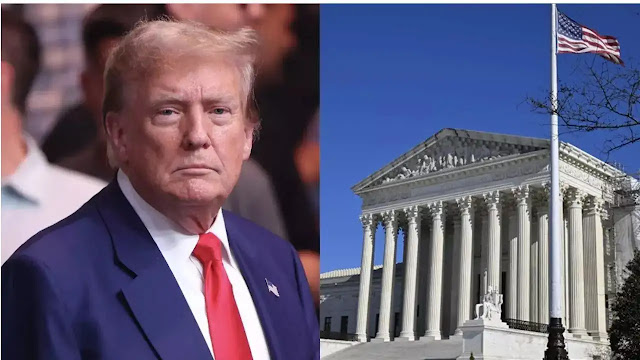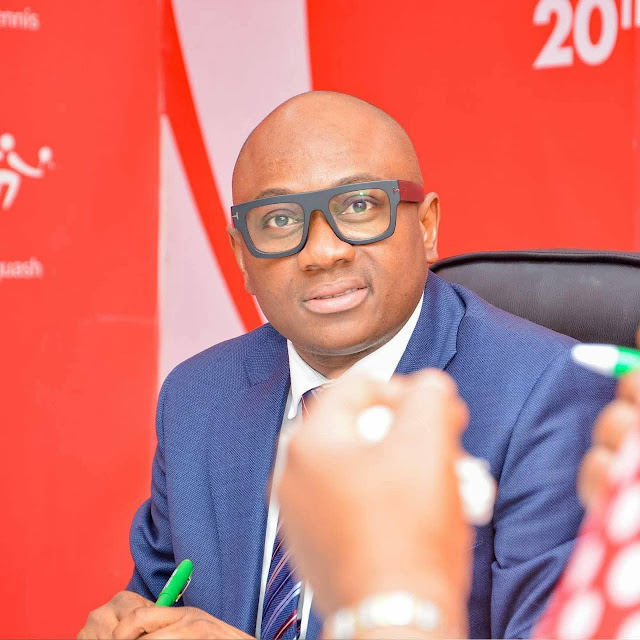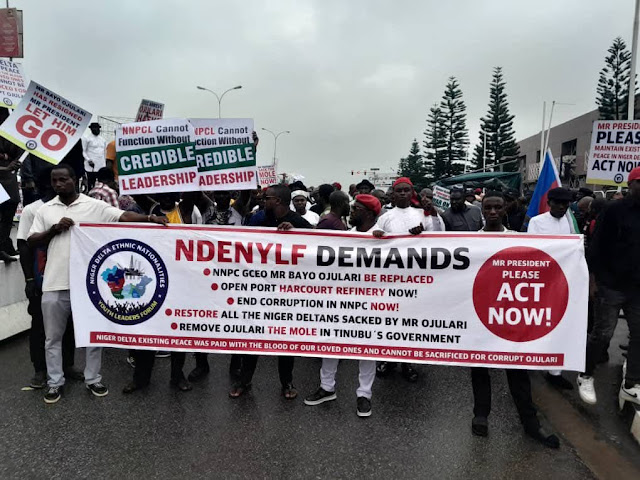On Tuesday, August 26, 2025, the administration of U.S. President Donald Trump filed an emergency appeal with the U.S. Supreme Court, seeking urgent intervention in a contentious legal battle over billions of dollars in foreign aid funding. The administration is attempting to block the release of approximately $12 billion in congressionally approved funds earmarked for global health and HIV/AIDS programs, arguing that a lower court’s order to disburse these funds undermines executive authority and could cause “irreparable diplomatic costs.” The dispute, which has already seen multiple rounds of litigation, centers on the Trump administration’s efforts to cut foreign aid as part of its broader “America First” agenda, pitting the executive branch against judicial rulings and nonprofit organizations advocating for the release of the funds. As the September 30 deadline looms, the administration’s appeal to the Supreme Court underscores the high stakes of this legal showdown, with implications for U.S. foreign policy, separation of powers, and the future of global aid programs.
The Legal Battle: Origins and Context
The legal dispute originates from President Trump’s executive actions upon taking office for his second term on January 20, 2025. On his first day, Trump issued an executive order imposing a 90-day freeze on all foreign aid funding, a move aimed at reviewing whether these programs aligned with his administration’s foreign policy priorities. This freeze affected billions of dollars allocated by Congress for critical initiatives, including global health programs and HIV/AIDS relief efforts, administered primarily through the U.S. Agency for International Development (USAID) and the State Department. The decision sparked immediate backlash from nonprofit organizations and contractors who rely on these funds to deliver life-saving services worldwide, leading to a series of lawsuits challenging the legality of the freeze.
The core issue revolves around the authority to control federal spending. Nonprofit organizations, including global health groups, argued that the freeze violated federal law, specifically the Impoundment Control Act of 1974, which restricts the president’s ability to withhold congressionally appropriated funds. These groups contended that the freeze not only disrupted their operations but also caused “extraordinary and irreversible harm” to vulnerable populations dependent on U.S. aid. In response, U.S. District Judge Amir Ali, appointed by former President Joe Biden, issued a temporary restraining order (TRO) on February 13, 2025, prohibiting the administration from halting the funding. When the administration failed to fully comply, Ali issued a subsequent order on February 25, mandating the release of nearly $2 billion for work already completed by contractors and grant recipients by February 26, 2025.
The Trump administration appealed this order to the U.S. Court of Appeals for the D.C. Circuit, arguing that the district court overstepped its authority. On August 13, 2025, a three-judge panel of the D.C. Circuit ruled in favor of the administration, stating that only the Government Accountability Office (GAO), as Congress’s watchdog, had the legal standing to challenge the funding cuts under the Impoundment Control Act. The panel determined that nonprofit organizations lacked a cause of action to press their claims, effectively reversing Ali’s earlier ruling. However, the full D.C. Circuit is still reviewing the case, and Ali’s order remains in effect, prompting the administration to escalate the matter to the Supreme Court.
The Emergency Appeal to the Supreme Court
In its emergency filing on August 26, 2025, the Trump administration, through the U.S. Department of Justice, urged the Supreme Court to intervene by September 2 to block the district court’s order. The administration argued that the lower court’s mandate to disburse approximately $12 billion by September 30, when the funds are set to expire, represents an overreach of judicial authority. The Justice Department’s filing described the district court as having “installed itself as supervisor-in-chief of further spending and rescissions proposals,” asserting that this intervention overrides the executive branch’s foreign policy judgments and disrupts the delicate balance of power between branches of government.
The administration’s appeal emphasizes the potential “irreparable diplomatic costs” of releasing the funds. According to the filing, the forced disbursement could undermine the administration’s ability to negotiate with foreign governments, redirect resources to align with its “America First” priorities, and engage in what it calls “interbranch dialogue” with Congress over spending decisions. The administration contends that the funds, which include nearly $4 billion for global health programs and over $6 billion for HIV/AIDS initiatives, should be subject to a thorough review to ensure they serve U.S. interests, rather than being automatically released due to a judicial mandate.
This is not the first time the Supreme Court has been drawn into this dispute. In March 2025, the Court, in a 5-4 decision, declined to freeze the release of nearly $2 billion in foreign aid, allowing the litigation to continue in the lower courts. That ruling, which saw Chief Justice John Roberts and Justice Amy Coney Barrett join the Court’s three liberal justices, directed Judge Ali to clarify the government’s obligations under the TRO, particularly regarding the feasibility of compliance timelines. The administration’s latest appeal reflects its ongoing frustration with the judicial process and its determination to assert executive control over foreign aid spending.
The Stakes: Foreign Policy and Separation of Powers
The legal battle over foreign aid funding raises profound questions about the separation of powers and the scope of executive authority. The Trump administration argues that the president has the prerogative to review and potentially withhold congressionally appropriated funds, particularly in the realm of foreign policy, where the executive branch traditionally enjoys significant discretion. By imposing the 90-day freeze, the administration sought to evaluate whether programs funded by USAID and the State Department align with its foreign policy goals, such as prioritizing U.S. economic and security interests over global humanitarian efforts.
However, critics, including the nonprofit organizations and Judge Ali, contend that the freeze violates the Impoundment Control Act, which requires the president to notify Congress and seek approval for any deferral or rescission of appropriated funds. The Act was enacted in 1974 in response to President Richard Nixon’s attempts to impound funds, establishing a framework to ensure congressional control over federal spending. The plaintiffs argue that Trump’s actions bypass this framework, effectively usurping Congress’s constitutional authority to appropriate funds.
The dispute also has significant implications for U.S. foreign policy. The frozen funds support critical programs, such as HIV/AIDS treatment and prevention, which have saved millions of lives in countries like Nigeria, Ethiopia, and South Africa. The suspension of these funds has disrupted operations, leading to layoffs, program cancellations, and reduced services for vulnerable populations. Nonprofit organizations have warned that the freeze threatens U.S. credibility as a global leader in humanitarian aid, potentially destabilizing regions already grappling with disease, poverty, and conflict. The administration counters that its review is necessary to eliminate wasteful spending and ensure that aid aligns with national interests, a cornerstone of Trump’s “America First” agenda.
The Role of the Courts and Judicial Oversight
The involvement of the judiciary in this dispute highlights the critical role of the courts in mediating conflicts between the executive and legislative branches. Judge Ali’s orders reflect a judicial effort to uphold congressional authority and protect the rights of nonprofit organizations and contractors who rely on federal funds. His rulings have been contentious, drawing sharp criticism from the Trump administration and conservative justices. In the March 2025 Supreme Court decision, Justice Samuel Alito, joined by Justices Clarence Thomas, Neil Gorsuch, and Brett Kavanaugh, dissented vigorously, arguing that a single district court judge lacked the authority to compel the government to disburse $2 billion in taxpayer funds. Alito described the ruling as a “most unfortunate misstep” that rewarded “judicial hubris.”
The administration’s latest appeal to the Supreme Court seeks to leverage the Court’s conservative majority, which includes three justices appointed by Trump himself. However, the March decision, in which Roberts and Barrett sided with the liberal justices, suggests that the Court may not automatically align with the administration’s position. The Court’s directive to Ali to clarify compliance obligations indicates a cautious approach, balancing the need for judicial oversight with practical considerations about the feasibility of rapid fund disbursement.
The ongoing review by the full D.C. Circuit adds another layer of complexity. While the three-judge panel’s ruling favored the administration, the full court’s decision could either uphold or overturn that ruling, potentially altering the legal landscape before the Supreme Court acts. The administration’s request for a September 2 intervention reflects the urgency of the situation, as the September 30 expiration date for the funds looms large.
Broader Implications for U.S. Foreign Aid
The dispute over foreign aid funding has far-reaching implications for U.S. global engagement. USAID, which administers approximately 60% of U.S. foreign assistance, disbursed $43.79 billion in fiscal year 2023, supporting programs in about 130 countries. These programs have been credited with containing outbreaks like Ebola, providing HIV/AIDS treatment to over 20 million people, and promoting stability in fragile regions. The Trump administration’s freeze, combined with its decision to place most USAID staff on administrative leave and eliminate 1,600 positions, has thrown these efforts into chaos, raising concerns about the long-term impact on global health and security.
Nonprofit organizations have argued that the freeze jeopardizes U.S. interests by undermining alliances, exacerbating global instability, and ceding influence to other global powers. In court filings, they emphasized that the funding “advances U.S. interests abroad and improves – and, in many cases, literally saves – the lives of millions of people across the globe.” The administration, however, views the freeze as part of a broader effort to streamline federal spending and prioritize domestic needs, a stance that resonates with Trump’s base but has drawn criticism from Democrats and international partners.
The legal battle also reflects broader tensions in U.S. politics over the role of foreign aid. Critics of the administration, including Democratic lawmakers like Rep. Gregory Meeks and Rep. Pramila Jayapal, have hailed judicial rulings against the freeze as a check on executive overreach. They argue that Congress’s constitutional authority to appropriate funds must be respected, and that the aid programs in question have been carefully vetted to serve both humanitarian and strategic goals. The administration’s supporters, conversely, view the freeze as a necessary step to curb what they see as wasteful spending on programs that do not directly benefit American taxpayers.
The Path Forward
As the Supreme Court considers the administration’s emergency appeal, the outcome will have significant consequences for the future of U.S. foreign aid and the balance of power between the branches of government. If the Court grants the administration’s request to block the district court’s order, it could embolden Trump to pursue further cuts to foreign aid and other programs, potentially reshaping U.S. global engagement. Conversely, if the Court upholds the lower court’s ruling, it could reinforce judicial oversight and congressional authority, limiting the president’s ability to unilaterally withhold appropriated funds.
The full D.C. Circuit’s review will also play a critical role. A decision affirming the three-judge panel’s ruling could strengthen the administration’s position, while a reversal could bolster the nonprofit organizations’ case and lead to further judicial mandates for fund disbursement. Regardless of the outcome, the dispute is likely to return to the Supreme Court, as both sides have indicated their intent to pursue all available legal avenues.
In the meantime, the administration has moved aggressively to review and terminate aid programs, canceling 5,800 USAID contracts and 4,100 State Department grants worth nearly $60 billion. These actions, part of a broader effort led by Trump and his ally Elon Musk to downsize the federal government, have intensified the controversy, with critics accusing the administration of bypassing legal and ethical obligations to achieve its cost-cutting goals.
Conclusion
The Trump administration’s emergency appeal to the Supreme Court over $12 billion in foreign aid funding represents a critical juncture in a high-stakes legal and political battle. The dispute, rooted in the administration’s efforts to freeze congressionally approved funds, raises fundamental questions about executive authority, judicial oversight, and the future of U.S. foreign policy. With the September 30 deadline approaching, the Supreme Court’s decision will shape not only the fate of these funds but also the broader relationship between the branches of government.
For nonprofit organizations and contractors, the fight is about more than money—it is about preserving life-saving programs that support millions of people worldwide. For the Trump administration, it is about asserting control over federal spending and aligning foreign aid with its “America First” agenda. As the legal battle unfolds, it will test the resilience of U.S. democratic institutions and the nation’s commitment to global leadership, with far-reaching consequences for both domestic politics and international relations.







